Replica Mortuary Pole (RBCM 20131)

Replica Mortuary Pole
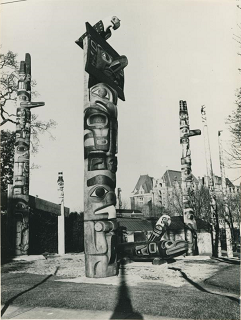
Referencing historical photographs, the carvers included an Eagle at the top of the replica Haida mortuary pole. PN 13941.
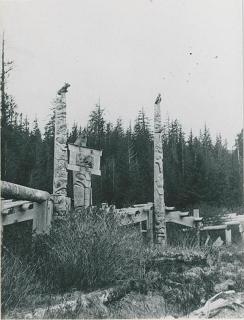
The mortuary pole, partly obscured by vegetation, at T’anuu Llnagaay in 1901. The village was no longer inhabited at that time. Charles F. Newcombe photograph. PN 6.
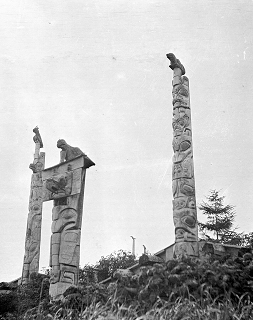
The mortuary pole at T’anuu in 1907. A-05258.
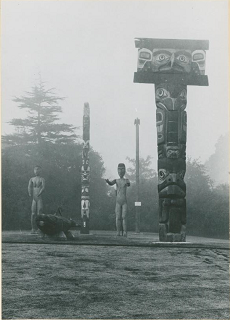
The original Haida mortuary pole was installed in Thunderbird Park in 1941. E. W. A. Crocker (Trio) photograph. PN 11687.
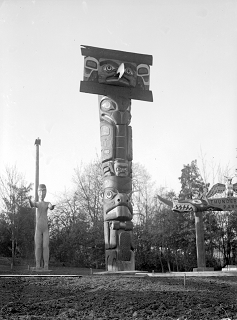
The original Haida mortuary pole, without the original Eagle and Copper at the top, in Thunderbird Park about 1950. B-07303.
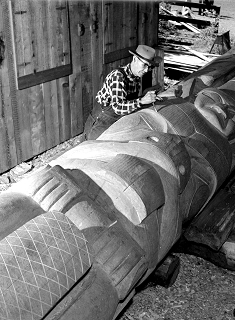
Mungo Martin carving the replica mortuary pole for Thunderbird Park, 1955. I-26993.
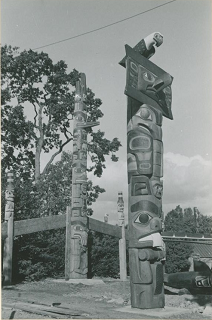
The replica pole newly installed in Thunderbird Park, 1955. Wilson Duff photograph. PN 12999.
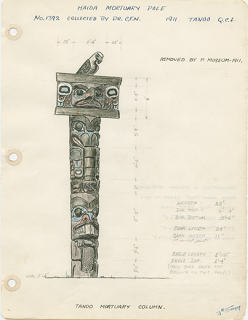
The original Haida mortuary pole drawn by John Smyly.
The original pole on which this replica is based commemorated a high-ranking Haida woman who was shot while travelling through the San Juan Islands in the 19th century. Her cremated remains were returned to T’anuu Llnagaay and, as was customary, would have been placed in the cavity behind the pole’s frontal board. Charles F. Newcombe, a Victoria physician and botanist who collected Northwest Coast art and cultural objects for museums around the world, acquired the original pole at T’anuu in 1911 (RBCM 1392). Photographs show a carved Eagle at the top with a Copper (a copper plaque that is a unit of wealth) leaning against it, but these were not on the pole when it was installed, poorly repainted, in Thunderbird Park in 1941.
The figures on the pole are crests of the deceased. The frontal board portrays Mountain Hawk. Whale is below, with three cylinders, called skils, between its flukes. Such cylinders, often part of hats, denote wealth earned through potlatching and refer to the human face below, which may represent the deceased or an ancestor. The face appears between the ears of a Beaver with its characteristic incisors and cross-hatched tail.
The original mortuary pole was removed from Thunderbird Park and in 1955 replaced by this replica carved by Mungo Martin, assisted by his son David Martin, and Henry Hunt, who was married to Martin’s adopted daughter Helen. There is an Eagle at the top of the new pole, indicating that the carvers consulted photographs of the pole at T’anuu as well as the original.
Do you have a story to share about this item? Add your voice to the community.